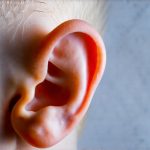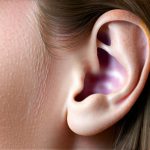Airplane travel, while often exciting and convenient, can unfortunately trigger nausea in many individuals. This isn’t necessarily indicative of an underlying medical condition; it’s frequently a result of the unique sensory environment encountered during flight – a mismatch between what your eyes perceive and what your inner ear detects. The feeling can range from mild discomfort to debilitating sickness, significantly impacting travel enjoyment. Understanding why nausea occurs is crucial for effectively managing it, as it allows you to proactively implement strategies before, during, and even after the journey. It’s important to remember that individual experiences vary greatly, so what works for one person might not work for another; experimentation and personalization are key.
The core issue often lies in motion sickness, exacerbated by factors specific to air travel. Your inner ear contains fluid and tiny hairs that sense movement. When you’re moving in a car or on a ship, your eyes typically confirm this motion. However, in an airplane, especially if you’re looking at something fixed like a book or the seat in front of you, your eyes tell your brain you are stationary while your inner ear registers motion. This sensory conflict creates confusion for the brain, leading to symptoms like nausea, dizziness, and even vomiting. Turbulence, altitude changes, cabin pressure fluctuations, and even strong smells can intensify these effects. It’s not just about the physical sensations either; anxiety surrounding flying itself can contribute to feelings of unwellness.
Pre-Flight Preparation: Minimizing Risk Before Takeoff
Preventing nausea is always preferable to treating it mid-flight. A thoughtful pre-flight routine significantly reduces your susceptibility. This begins several days before departure, focusing on lifestyle adjustments and practical considerations. Prioritize adequate sleep in the days leading up to your flight; fatigue can amplify sensitivity to motion. Avoid heavy, greasy foods and excessive alcohol consumption at least 24 hours prior, as these can irritate the stomach and worsen nausea. Instead, opt for light, easily digestible meals. Hydration is also paramount – drink plenty of water to maintain optimal fluid balance.
Consider your seating arrangement when booking. Seats over the wings experience less turbulence than those further forward or back. If you are prone to motion sickness, requesting a window seat can sometimes help; looking at the horizon provides a stable visual reference point for your brain, reducing sensory conflict. However, some people find aisle seats preferable as they feel more spacious and less claustrophobic. Experiment with what works best for you. Finally, if you are particularly anxious about flying, explore relaxation techniques like deep breathing exercises or meditation to calm your nerves. Understanding the connection between anxiety and digestive health is key, so exploring tools for gut checks during menopause or andropause might offer valuable insights.
In-Flight Strategies: Managing Symptoms During Travel
Once airborne, active management is essential. If you begin to feel nauseous, don’t wait for symptoms to escalate – address them immediately. Focus on a fixed point outside the aircraft (the horizon if possible) and avoid reading or looking at screens. Deep, slow breaths can help calm your system and reduce anxiety. Sip water frequently; dehydration exacerbates nausea. Avoid strong smells like perfume or food odors that might trigger discomfort. Small, frequent snacks, such as dry crackers or plain biscuits, may help settle your stomach.
Over-the-counter remedies can also be effective for some travelers. Ginger capsules or ginger chews are a natural option with a long history of use for nausea relief. Motion sickness bands (acupressure wristbands) apply pressure to specific points on the wrist believed to alleviate symptoms. If you have previously discussed travel sickness medication with your doctor, now is the time to utilize it – but be mindful of potential side effects like drowsiness. Remember that these remedies are not foolproof and may not work for everyone. Those who experience frequent digestive discomfort should also explore early detection strategies for slow bowel movement disorders.
Dietary Considerations During Flight
What you eat and drink during flight can significantly impact how you feel. Avoid foods that are difficult to digest or known to trigger your nausea. This includes:
– Fatty, greasy, or fried foods
– Spicy dishes
– Highly processed snacks
– Excessive amounts of sugar
Instead, opt for light, bland options such as:
– Dry crackers or toast
– Plain biscuits
– Bananas
– Applesauce
– Rice cakes
Similarly, be mindful of beverage choices. Avoid alcohol and caffeinated drinks, which can dehydrate you and worsen nausea. Carbonated beverages may also contribute to bloating and discomfort. Water is the best option, followed by herbal teas like peppermint or ginger tea (if available). Small, frequent sips are more effective than gulping down large amounts of liquid at once. If travel disrupts your usual digestive patterns, consider looking into stool form changes during heavy travel seasons.
Leveraging Sensory Control
A significant component of managing in-flight nausea involves controlling your sensory input. As mentioned earlier, visual focus is critical. Staring at a fixed point like the horizon helps reconcile the conflicting signals between your inner ear and eyes. If you must use a screen or read, take frequent breaks to look up and refocus on distant objects.
Beyond vision, consider other senses. Use noise-canceling headphones to minimize distracting sounds that can exacerbate anxiety and nausea. A cool compress on your forehead or neck can provide soothing relief. Aromatherapy, using calming scents like lavender or peppermint (check airline regulations regarding essential oils first), might also be beneficial. Ultimately, the goal is to create a sensory environment that minimizes confusion and promotes relaxation. In instances where travel leads to discomfort, remember tips for handling reflux during intense workdays can be adapted to in-flight situations.
Addressing Anxiety & Psychological Factors
Nausea isn’t always purely physical; psychological factors play a substantial role. If you have a fear of flying, anxiety can contribute significantly to feelings of unwellness. Address your anxieties proactively. Techniques like deep breathing exercises, progressive muscle relaxation, or guided meditation can help calm your nerves before and during flight.
Visualization – mentally picturing a successful, comfortable journey – can also be effective. If you’re particularly anxious, consider talking to a therapist specializing in phobias; they can provide strategies for managing your fear. Remember that acknowledging and addressing your anxieties is an important part of mitigating nausea. Don’t hesitate to inform the flight attendants if you are feeling unwell or anxious; they may be able to offer support and reassurance. It’s also important to remember that flying is statistically very safe, and focusing on this fact can help alleviate anxiety. Dealing with significant stress during travel can sometimes lead to stool movement loss during high-stress travel. For those experiencing persistent issues, exploring unusual testing strategies for rare digestive disorders might be beneficial to identify underlying causes and develop personalized management plans. Finally, recovery from travel can sometimes involve dry stool formation during travel recovery days.


















